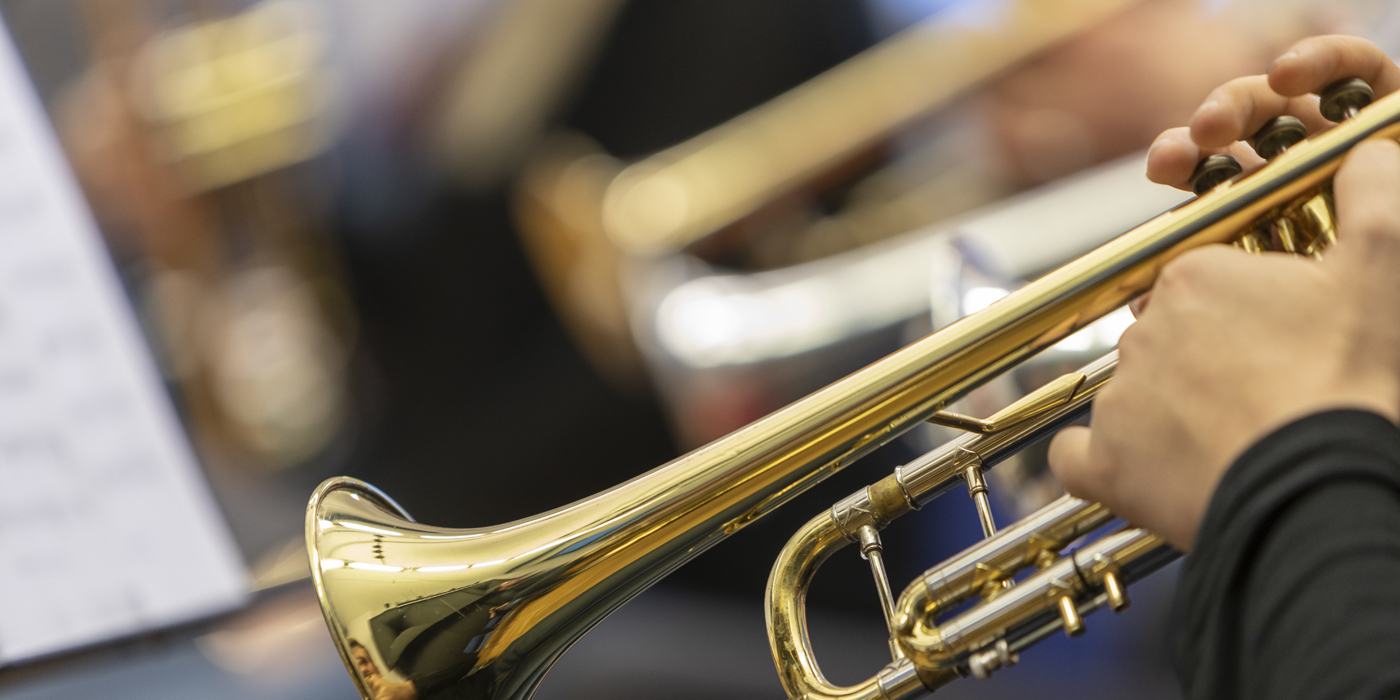
For inexperienced teachers (and often more experienced ones, too), choosing which elements to fix in a rehearsal can be difficult. Although multiple elements are required for a fine performance, I’ve found the T.R.I.A.D. acronym to be helpful in prioritizing them. Today I’ll share these pedagogical strategies, that I believe can help any teacher or sectional coach to be more efficient in the pursuit of building an outstanding performance.
“T” Stands for Timing and Rhythm
This element is first because it’s extremely difficult to fix any other issues if the rhythms aren’t lining up. Right notes at the wrong time are actually wrong notes. Also, you simply cannot hear articulations, note lengths, or other elements if musicians are not playing these notes at the same time.
As simple as it sounds, before you fix any timing problems, please make sure that YOU actually know what the correct rhythm(s) should be! Also, take the time necessary to teach your students rhythms. There are numerous resources to help your students develop their understanding of rhythms. If you wait until they encounter rhythms that don’t understand, you end up continuing the cycle of teaching rhythms by rote because they’ll never learn a system or get comfortable recognizing them by sight.
When fixing rhythms in the ensemble, be sure to isolate the problem, find ways to make the rhythms easier for the student(s), build upon that success with more difficult elements, and continue until the rhythm is played correctly as written. You are likely familiar with several pedagogical strategies, but a few of my most successful methods are:
- Slow it down
- Play the rhythm on one pitch
- Clap, sing, tap, buzz, hiss, clap, etc, making it physical
- Remove any ties, replace rests with notes, change the articulation, just play the beginning of notes (bops)
The key is to break the elements down until the student can find success, then add them back in slowly. Once the students are playing notes at the right time, then you can make sure they’re playing the right notes!
“R” Stands for Right Notes
It’s very difficult to fix anything else if the students are playing wrong notes. In rehearsal, trust your ears. If it sounds wrong, it usually is wrong! Too many times we trust our ensembles a little too much and think that we’re mistaken in a passage that doesn’t sound exactly as it should. Typically, it’s wrong notes! That being said, know the piece. Are there intentional dissonances that can be mistaken for wrong pitches? Are there errata on their parts or are they playing the music as written?
Each teacher also has to find their own timing for when to address problem notes. Do you need to stop the ensemble and fix notes during the first read? The second read? We know that there are students that will fix their own mistake the second time through, but that there are also students that will not correct the issue without work from the director.
Why is the student missing the note? Do they know the key signature? Are accidental rules clear to them? Do they know the correct fingering? Is there something wrong with their instrument? Get to the cause of the problem and then fix it. Sometimes the students have difficulty with the technical demands of moving from one fingering to the next.
As with rhythms, slow down the passage and incorporate strategies of building on success. Repetition is key to correcting any note problems permanently, and that includes consistent practice on scales so that students are comfortable playing in any key.
SmartMusic can help students with the pitches and rhythms. Try it for free!
“I” Represents Intonation, Balance, and Blend
This section warrants books and books worth of discussion,.For sake of word limits, I’ll just touch on a few important aspects. Remember that it’s as important to have students understand the desired concepts as it is to teach them how to achieve these results.
Intonation for our students must be a constant process, but you need to develop a low tolerance for out-of-tuneness. The best way to fix intonation problems is for the student to be uncomfortable until they’re playing in tune! Students need the tools to fix intonation problems, but they also need to know who or what they’re listening to. This directed listening is not only important for intonation, but for your preferred concept of balance and blend.
Never forget that proper tone production is key!
“A” Stands for Articulations and Note Lengths
Here our focus is on the beginning and ends of the notes. When discussing articulations, make sure your terminology is not confusing to your students. We often discuss articulations when we mean note lengths, and then we have items like tenuto and marcato that can mean both! Don’t assume your students know what is desired from each musical element; you must train them.
Once rhythms and notes are fixed, then we should start detailing the music to match articulations and note lengths. This allows for greater clarity of lines and for the musicianship to be passed from the stage to the audience. As with any element, you must know your music so you know what you want to hear with indicated and non-indicated articulations and note lengths.
Improving articulations is often one of the more difficult tasks. This is in part because it requires correcting physical actions that often can’t be seen. In addition, perhaps more than with any other musical element, students respond differently to terms and strategies when dealing with articulation. Take time to teach the proper fundamentals of articulation, educate the ensemble as to the expectations with each notation, and listen to results with a selective ear as to help them play with an ensemble sound.
“D” is for Dynamics and Expressive Elements
This is not last because it’s the least important, it’s last because these are the elements that make a truly finished product! Combined with articulations and note lengths, these allow the right notes and rhythms to become music.
Again, it’s vitally important that you study the score so you know what you want the dynamics to be, where the rallentando will happen, and the pace of your stringendo. Remember that composers are writing for the general concept of forte. They don’t know how loud or soft your bassoons can actually play. They don’t know that you have twelve trumpets and only two horns.
In teaching our students, each individual player has a soft-to-loud range from where their sound starts sounding appropriate to where it stops. Then each section has that range. We must work with our students to expand that range, but perform the music within the range available at that time! Sometimes our bands have to play louder than we would like so they can have good tone, but we must continue to teach so that the band is able to play softer to allow for greater dynamic contrast.
Additionally, we must make sure our students know the meanings of foreign terms in their music. Do they understand the written tempo suggestions or style markings? Do you? We must treat musical vocabulary to be as important as the notes on the page and train our students to notice the ink all around the note and not just the pretty black dot.
A Few Final Thoughts
Complete performances require high-level achievement of ALL of these elements, given the technical abilities of the students and the available rehearsal time. Improving these technical items will allow the performers to convey this musicality at a higher degree to the audience. Individual teachers will spend more or less time on each element (or “until it’s good enough”) based on experience, taste, and pedagogical need.
Of course, it’s possible to rehearse more than one of the elements at a time, especially as the teacher gains experience, but this serves as a guide to simplify the error-detection and correction. Too often young teachers just stick to fixing rhythms, wrong notes, and too loud/too soft, so push yourself to be comfortable working on all of these elements as much as possible so you can get to the music!
This structure can also serve as a guide for students’ individual practice routines and for early sight-reading training. I hope you’ve found it useful.
In closing, remember that if you’re not teaching it, you’re allowing it to happen. This isn’t always bad, but it’s true — and important to keep in mind. Good luck, and thank you for teaching!
